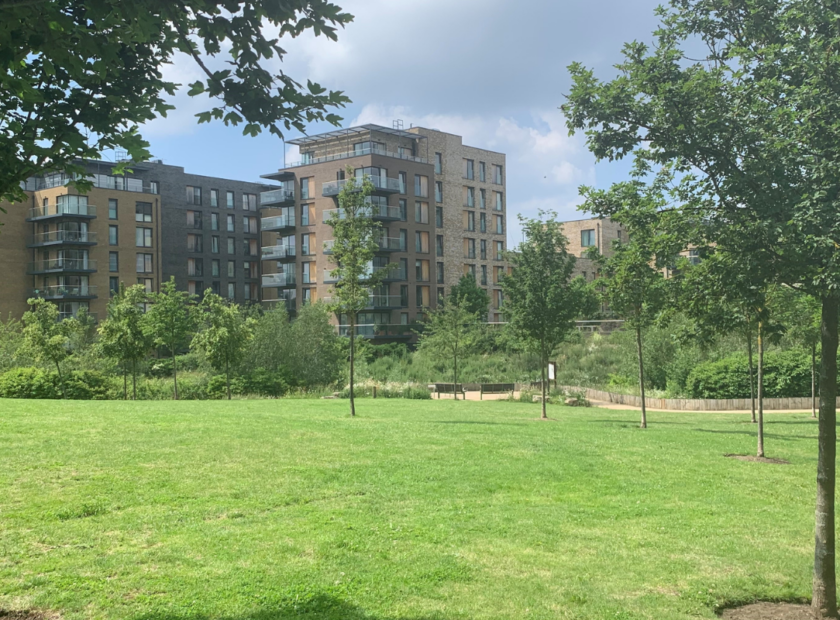Change is coming. It has to. Tackling the twin crises of climate breakdown and nature loss is the biggest challenge we are ever likely to face. It will hit hardest the people who have done the least to create it. But worst-case scenarios are not an inevitability. Activist, journalist and author George Monbiot wrote recently that catastrophe is not a matter of fate. It’s a matter of choice.
Making new choices need not feel like a handbrake turn but acting at speed does mean an end to empty rhetoric and grandstanding – we’ve had enough of that. Instead, talk needs to be linked to action, starting every project and plan by getting all the right people in the room for a big and urgent conversation.
The pandemic shook things up. It made us see our towns and cities differently; it made us value what’s on the doorstep and take more seriously the relationship between access to space and health and wellbeing. It also made us realise that we can achieve remarkable things when people collaborate, and that change isn’t only about policies and targets, but about making the system work for us.
We have to take this learning forward, and root it in better relationships. We have to find new ways for planners, designers, landscape architects, developers and the community to become problem solvers together. This means new behaviours, dissolving professional boundaries. In fact, the dawn of the polymath may well be upon us, with all that we each offer combined in new ways. While we would be the first to acknowledge it really is only the dawn, at LDA Design we now have training specifically about seeing the big picture and synthesising complexity. This training is about drawing in other disciplines, putting together the right information at the right time, thinking critically about it, and finding solutions.
A strong planning system that works for people and for ecosystem recovery is critical. It is key to the scale of challenges such as the move to a circular and more localised economy. Above all we need to halt the default, which is people keeping on doing what they have always done.
Obviously mandating change is an option. It’s starting to work with Biodiversity Net Gain, for example, with more developers now taking on board their responsibilities as custodians of land. If we expanded this approach to mandate for social value and for ‘net good’ outcomes for every development, could we similarly jolt participants in the planning process into a positive conversation that moves away from the polarisation of ‘good and bad’?
What fills us with hope is the appetite out there for doing things well, if given half a chance. In our recent work on Welborne Garden Village, near Fareham, for example, all parties worked together through the crucial period of preparing the planning application, brokering shared outcomes and agreeing the compromises necessary for the settlement to be built without undermining the landscape-led vision and the quality of place.
The planning system needs to create the environment where this kind of collaboration can happen more easily. It needs a big rethink, taking a more visionary spatial approach that starts from natural catchment areas and natural boundaries. Then rural and urban interests can unite in a common understanding of what could be possible, rather than pitching against each other.
Planning also needs to take land use in a new direction, designing for the future rather than compliance. Plans for every parcel of land should be as multi-faceted as possible. So, farmland is used to generate renewable energy, manage flood risk and support nature recovery. Public open space is charged with cooling, generating energy, providing active travel links and supporting better physical and mental wellbeing. Housing developments are mixed, walkable and sustainable, providing workspaces as well as places to live. What a galvanising, positive and creative change this could be.
We need plans that draw on the landscape and are strengthened by net-zero design codes, green infrastructure standards and local nature recovery networks. In Exeter, we developed a strategy which emphasises the qualities and assets that make the city liveable and attract investment, so that major housing projects built at higher density could benefit the whole city.
We urgently need to increase the pace of change and it’s in our gift to make that happen. In the words of writer Arundhati Roy, “Another world is possible, she is on her way. On a quiet day, I can hear her breathing.”
Frazer Osment is Chair of LDA Design, kind sponsors of the TCPA’s 2021 Annual Conference.
Cover photo by Claire Borley Photography / LDA Design




